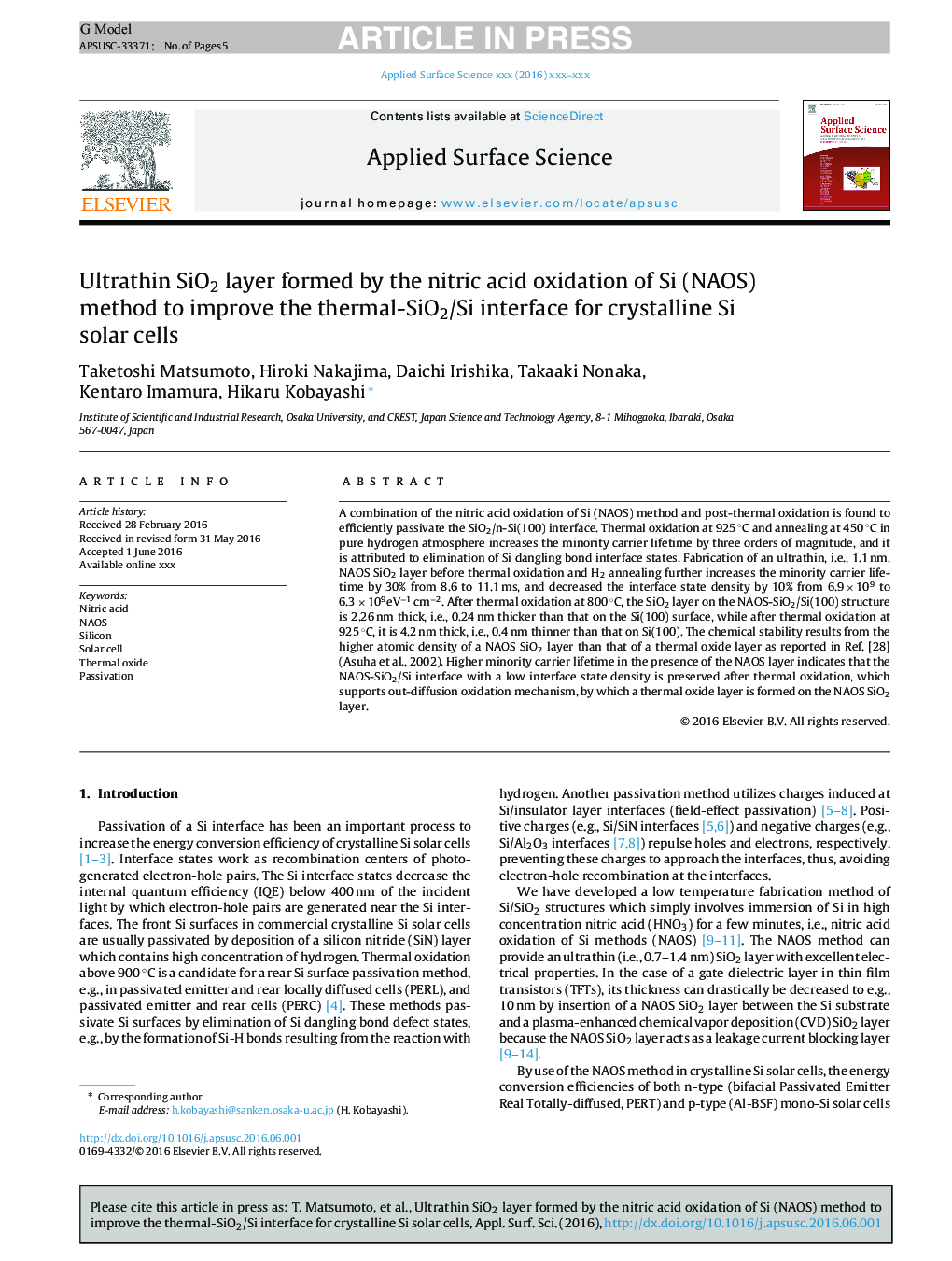| کد مقاله | کد نشریه | سال انتشار | مقاله انگلیسی | نسخه تمام متن |
|---|---|---|---|---|
| 5348091 | 1503574 | 2017 | 5 صفحه PDF | دانلود رایگان |
عنوان انگلیسی مقاله ISI
Ultrathin SiO2 layer formed by the nitric acid oxidation of Si (NAOS) method to improve the thermal-SiO2/Si interface for crystalline Si solar cells
دانلود مقاله + سفارش ترجمه
دانلود مقاله ISI انگلیسی
رایگان برای ایرانیان
کلمات کلیدی
موضوعات مرتبط
مهندسی و علوم پایه
شیمی
شیمی تئوریک و عملی
پیش نمایش صفحه اول مقاله

چکیده انگلیسی
A combination of the nitric acid oxidation of Si (NAOS) method and post-thermal oxidation is found to efficiently passivate the SiO2/n-Si(100) interface. Thermal oxidation at 925 °C and annealing at 450 °C in pure hydrogen atmosphere increases the minority carrier lifetime by three orders of magnitude, and it is attributed to elimination of Si dangling bond interface states. Fabrication of an ultrathin, i.e., 1.1 nm, NAOS SiO2 layer before thermal oxidation and H2 annealing further increases the minority carrier lifetime by 30% from 8.6 to 11.1 ms, and decreased the interface state density by 10% from 6.9 Ã 109 to 6.3 Ã 109eVâ1 cmâ2. After thermal oxidation at 800 °C, the SiO2 layer on the NAOS-SiO2/Si(100) structure is 2.26 nm thick, i.e., 0.24 nm thicker than that on the Si(100) surface, while after thermal oxidation at 925 °C, it is 4.2 nm thick, i.e., 0.4 nm thinner than that on Si(100). The chemical stability results from the higher atomic density of a NAOS SiO2 layer than that of a thermal oxide layer as reported in Ref. [28] (Asuha et al., 2002). Higher minority carrier lifetime in the presence of the NAOS layer indicates that the NAOS-SiO2/Si interface with a low interface state density is preserved after thermal oxidation, which supports out-diffusion oxidation mechanism, by which a thermal oxide layer is formed on the NAOS SiO2 layer.
ناشر
Database: Elsevier - ScienceDirect (ساینس دایرکت)
Journal: Applied Surface Science - Volume 395, 15 February 2017, Pages 56-60
Journal: Applied Surface Science - Volume 395, 15 February 2017, Pages 56-60
نویسندگان
Taketoshi Matsumoto, Hiroki Nakajima, Daichi Irishika, Takaaki Nonaka, Kentaro Imamura, Hikaru Kobayashi,